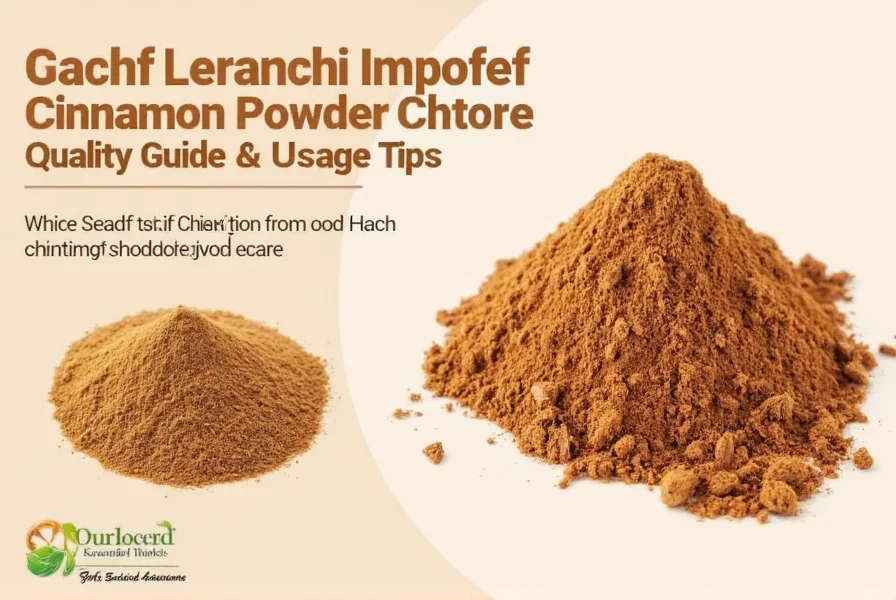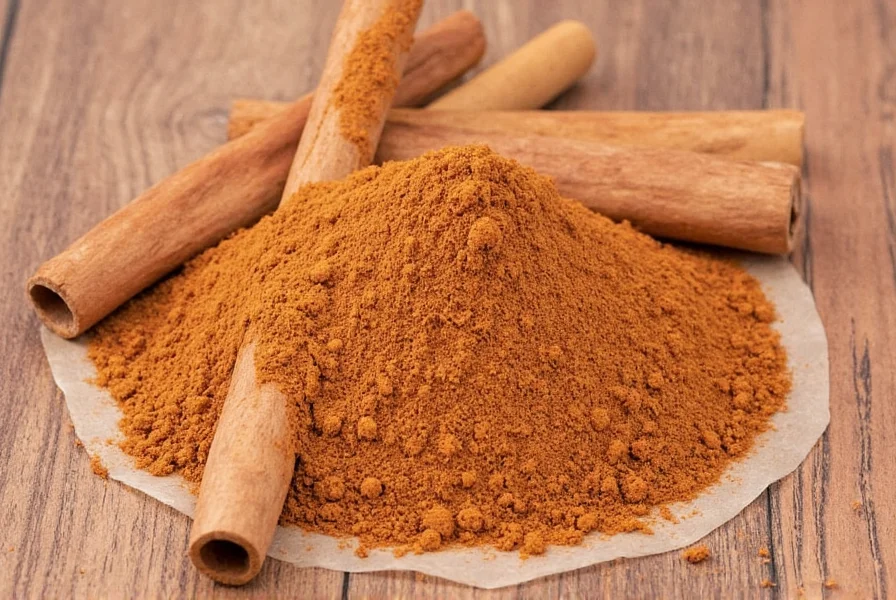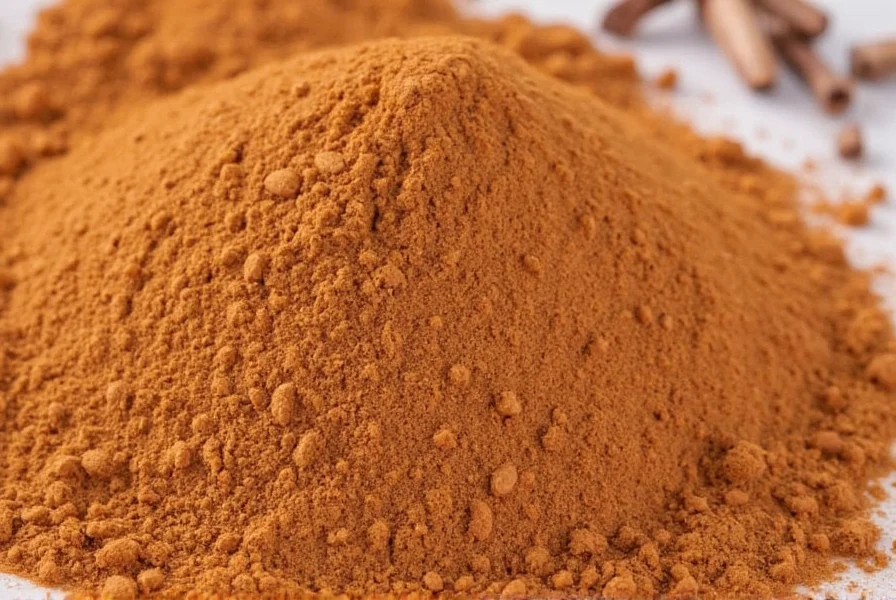Sadaf cinnamon powder has gained popularity in North American and European markets as an accessible option for home cooks seeking authentic Middle Eastern and South Asian flavors. Unlike premium Ceylon cinnamon varieties, Sadaf uses cassia cinnamon which provides a more intense, slightly spicy profile preferred in many traditional recipes. Understanding its characteristics helps consumers make informed choices based on their culinary needs and health considerations.
Understanding Cinnamon Types and Quality Indicators
Cinnamon exists in two primary forms: Ceylon ("true" cinnamon) and cassia. Sadaf products fall into the cassia category, which accounts for approximately 90% of cinnamon sold globally. Cassia cinnamon features:
- Thicker, harder bark layers that create a more intense flavor
- Higher coumarin content (up to 1% by weight compared to Ceylon's trace amounts)
- Distinctive reddish-brown color rather than Ceylon's lighter tan
- Lower price point due to more abundant cultivation
When evaluating authentic Sadaf cinnamon powder quality, check for these indicators:
| Quality Indicator | Authentic Sadaf Cinnamon | Lower Quality Substitute |
|---|---|---|
| Aroma | Strong, sweet-spicy fragrance immediately noticeable | Faint or musty smell |
| Color | Consistent reddish-brown throughout | Lighter brown or uneven coloring |
| Texture | Fine, uniform powder without clumps | Grainy texture or visible bark fragments |
| Taste | Balanced sweet-spicy flavor with slight heat | Bitter or one-dimensional taste |

Sadaf Cinnamon Powder: Product Analysis
Sadaf Natural Foods, the producer of this cinnamon powder, sources their cassia cinnamon primarily from Indonesia and China where Cinnamomum cassia trees thrive. The processing method involves harvesting mature bark, drying it, and grinding it into a fine powder without additional fillers or anti-caking agents. This pure Sadaf cinnamon powder composition ensures consistent quality across batches.
One distinguishing feature of Sadaf cinnamon powder is its particle size. The manufacturer grinds the bark to approximately 200 mesh (74 microns), creating a finer powder than many competitors. This fine texture provides several advantages:
- Superior solubility in both hot and cold liquids
- Even distribution in baked goods without gritty texture
- Faster flavor release in cooking applications
- Improved shelf stability compared to coarser grinds
When comparing Sadaf cinnamon powder vs other brands, consider that many supermarket brands blend cassia with other spices or add maltodextrin as a filler. Sadaf's single-ingredient formulation makes it a preferred choice for cooks seeking authentic Sadaf cinnamon powder benefits without additives.
Practical Applications and Storage Recommendations
Sadaf cinnamon powder excels in applications where a bold cinnamon flavor is desired. Its robust profile works particularly well in:
- Spiced coffee and hot chocolate preparations
- Indian and Middle Eastern meat rubs and stews
- Traditional Persian rice pudding (sholeh zard)
- Apple pies and other American-style baked goods
- Chai tea blends requiring strong spice presence
For optimal freshness, store Sadaf cinnamon powder in its original resealable pouch inside an airtight container away from light and heat. Properly stored, it maintains peak flavor for 12-18 months. Avoid storing near the stove or in clear containers, as light and temperature fluctuations accelerate flavor degradation. When evaluating how to identify genuine cinnamon powder freshness, check for vibrant color and strong aroma—dull powder with weak scent indicates age.

Health Considerations and Usage Guidelines
While Sadaf cinnamon powder offers culinary benefits, consumers should understand its coumarin content. Cassia cinnamon naturally contains higher levels of coumarin than Ceylon varieties, which may pose concerns for individuals consuming large quantities regularly. The European Food Safety Authority recommends limiting coumarin intake to 0.1 mg per kg of body weight daily.
For most home cooking applications, Sadaf cinnamon powder usage remains well within safe limits. A typical recipe using 1-2 teaspoons (2-5 grams) of Sadaf cinnamon powder contains approximately 5-15 mg of coumarin, significantly below concerning levels for adults. However, those with liver conditions or taking certain medications should consult healthcare providers about Sadaf cinnamon powder health implications.
Where Sadaf Fits in the Cinnamon Market
When considering Sadaf cinnamon powder vs other brands, it occupies a middle ground between premium Ceylon varieties and budget supermarket options. Its consistent quality makes it reliable for regular home use, though specialty cooks seeking the delicate flavor of Ceylon cinnamon might prefer alternatives for certain applications.
For those searching where to buy quality cinnamon powder, Sadaf is widely available in Middle Eastern grocery stores, major supermarkets, and online retailers. The brand's consistent packaging and labeling make it easy to identify authentic products—look for the distinctive red and yellow packaging with clear ingredient listing.
Conclusion: Making Informed Cinnamon Choices
Sadaf cinnamon powder serves as a dependable option for cooks seeking consistent quality and bold flavor at an accessible price point. Understanding its cassia cinnamon characteristics helps consumers select the right product for their culinary needs while making informed decisions about usage. Whether you're preparing traditional Middle Eastern dishes or classic American baked goods, recognizing authentic Sadaf cinnamon powder benefits ensures you maximize flavor in your cooking.
Frequently Asked Questions
Is Sadaf cinnamon powder Ceylon or cassia?
Sadaf cinnamon powder is made from cassia cinnamon (Cinnamomum cassia), not Ceylon cinnamon. It has the characteristic stronger, spicier flavor and higher coumarin content typical of cassia varieties.
How long does Sadaf cinnamon powder stay fresh?
When stored properly in a cool, dark place in its resealable packaging, Sadaf cinnamon powder maintains optimal flavor for 12-18 months. After this period, it remains safe to consume but gradually loses aromatic compounds and flavor intensity.
Can I substitute Sadaf cinnamon powder for Ceylon cinnamon?
Yes, but with adjustments. Sadaf's cassia cinnamon has a stronger flavor than Ceylon, so use about 25% less when substituting. For delicate recipes like custards or light cakes, consider blending with a milder cinnamon variety for balanced flavor.
Does Sadaf cinnamon powder contain additives?
No, authentic Sadaf cinnamon powder contains only ground cassia cinnamon bark without fillers, anti-caking agents, or other additives. Always check the ingredient list to verify it lists only "cinnamon" as the sole ingredient.
What makes Sadaf cinnamon powder different from store brands?
Sadaf cinnamon powder typically features finer grinding, consistent sourcing, and single-origin processing compared to many store brands that may blend multiple cinnamon sources or add maltodextrin as a filler. This results in more reliable flavor and texture for cooking applications.











 浙公网安备
33010002000092号
浙公网安备
33010002000092号 浙B2-20120091-4
浙B2-20120091-4